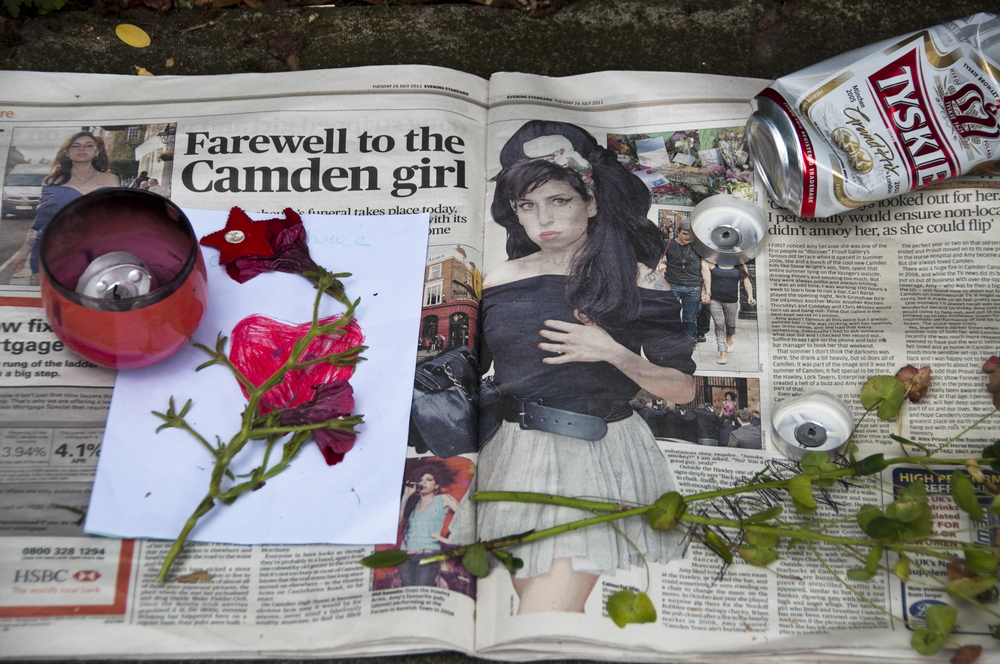It’s one of the oldest superstitions in pop culture. The notion that movie stars and celebs always give up the ghost in groups of three. And it does happen from time to time. After all, the Big Bopper, Richie Valens, and Buddy Holly all died in one 24-hour period in 1959. Of course, they perished in the same plane crash, so I think we can agree theirs were exceptional circumstances.
But what about other situations? Like when fashion designer Kate Spade, television chef Anthony Bourdain, and actor Jackson Odell all passed away within a matter of days? Spade and Bourdain died by suicide, and Odell was found unresponsive in a sober living home. Tragic events, might there be more than coincidence at play? Research indicates the answer’s a firm, “No.”
Keep reading to learn more about how a careful examination of vital records and statistics disproves the myth that celebrities die in threes.
An Urban Legend with Serious Street Cred
In 2014, after the passing of Robin Williams and Lauren Bacall, the world held its breath. Who would be the third celebrity to die? As people waited for the other shoe to drop, they relied on anecdotal evidence from the past to justify their macabre anticipation.
After all, we can think of at least ten instances when celebrities have died in threes. They include the “Summer of Death” in 2009 when the world lost three pop icons back to back, Ed McMahon, Farrah Fawcett, and Michael Jackson.

Michael Jackson 1990 || Editorial credit: Vicki L. Miller / Shutterstock.com
Or how about 2014 when the greedy Grim Reaper took actress Ann B. Davis (of Brady Bunch fame), baseball legend Don Zimmer, and actor Rik Mayall? And no one can forget the deaths of rock legend David Bowie, actor Alan Rickman, and René Angélil, husband and manager of Celine Dion, in 2016. Add to this, Alan Thicke, George Michael, and Carrie Fisher, and it has to be more than coincidence. Right?
Wrong! Researchers now have mathematical proof that this urban legend is fiction, not fact. No matter how strong the human tendency remains to seek patterns in life’s unexpected events.
Disproving the Celebrity Rule of Threes
The New York Time’s (NYT) Upshot examined the statistical prevalence of celebrity deaths in threesomes. How did they do this? They started by defining a “celebrity” as anyone with an obituary running at least 2,000 words or longer. This word count is equivalent to 67 percent of a full-length printed page.
For some context, consider the obituary that ran for Lauren Bacall in 2014. It came in at a respectable 3,000 words. On the other end of the spectrum, there was the obituary for Pope John Paul II, which contained a whopping 13,363 words. Compare these word counts to your Average Joe, a mere 200-450 words, and you can see why this filter proved useful in identifying “famed decedents.”
Researchers identified 449 “celeb” obits since 1990 using this filter. In 75 cases, two stars perished within three days of one another. But here’s the kicker. They only found seven instances where three celebrities died within five days of each other. These findings fell well within the confines of random chance.
A Loose Definition of Celebrity
It’s worth noting that the definition of “celebrity” proved somewhat ambiguous in this study. After all, some individuals who led important, albeit unglamorous lives, got filtered into the results. These included people like Dr. Jonas Salk, the polio vaccine’s inventor, and Albert Shanker, the teachers’ union leader. Were Salk and Shanker actual celebs? We highly doubt their names would appear on Entertainment Tonight.
Infamous individuals, including mass-murdering dictators like Pol Pot and Idi Amin, also fell into the study’s “celeb” category. Yet, none of us would celebrate these monsters as stars. And of course, some very famous people had obits too short to make the cut, like Amy Winehouse.

Fans pay tribute to Amy Winehouse in front of her house on Camden square, on July 27, 2011 in London. Amy Winehouse died aged 27 on Saturday, July 23. || Photo by Thomas Dutour
Nonetheless, the NYT’s study is among the first to make significant headway towards scientifically disproving the notion celebs die in threes. Yet, perhaps the more profound and interesting question remains why we seek these patterns in the first place?
Why Humans Seek Patterns in Life
Scientists speculate that establishing meaningful patterns helped our ancestors survive in nature. When a primitive ancestor heard a rustle in the bushes, they could assume it was just the wind. Or, they could see a pattern based on previous encounters with cave bears and make a run for it. In the latter case, even if the rustling turned out to be the wind, there was no harm, no foul. But for an ancestor who mistook a bear for the wind? If you’ve seen The Revenant, you know what happened next.
As descendants of individuals who survived by finding meaningful patterns in life, we can’t shake the habit. The act of pattern-seeking, even where patterns don’t exist, is known as apophenia. And it can lead to downright superstitious behavior. Like carrying a rabbit foot or “knocking on wood” at the first talk of trouble.
What’s more, the number three proves a potent figure in our society. We raise our children on this number, from “the Three Bears” to “the Three Blind Mice.” And it represents an ideal number in everything from artistic compositions to landscaping and religious doctrine (e.g., the Holy Trinity). When it’s all said and done, the idea of celebrities dying in twos, while statistically sounder, proves far from cosmically satisfying.
Pattern-Seeking Versus Oblivion
Does this research mean that pattern-searching is an altogether wasted endeavor? Not necessarily.
Researchers also remind us that looking for patterns in life remains a vital aspect of living. Just remember to hold your observations up to some scientific scrutiny. After all, the polar opposite of pattern-hunting is total oblivion. Sure, existing in this state today won’t make you a sabertooth lion’s sack lunch, but it could get you mugged or run over in a busy crosswalk.
As John Hoopes, professor of anthropology at the University of Kansas, notes, “It’s always better to recognize a pattern and be prepared to deal with it than to ignore it.” That said, there’s no need to hold your breath when it comes to clusters of celebrity death. As it turns out, the Grim Reaper’s no more generous with famous people than the rest of us.
By Engrid Barnett, contributor for Ripleys.com










Rest in peace to all the greats!